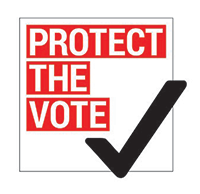Today, my colleagues and I release our newest report: “Purges: A Growing Threat to the Right to Vote.” This report comes as backers of strict voting policies are increasingly focusing on making it harder for would-be voters to get or stay on the rolls.
Over the past year, we looked at laws and policies from across the country and dug into years’ worth of data from the Election Administration and Voting Survey. We looked at purge rates across the country, in counties large and small, calculating the purge rates for some 6,600 jurisdictions. Among our key findings are:
- More people are being purged now than at any time in the past decade. Between the federal elections of 2006 and 2008, boards of election collectively removed 12 million voters from their rolls. In the two years ending with the presidential election of 2016, that number grew to 16 million — an increase of 33 percent.
- Much of this increase coincided with a landmark decision handed down by the Supreme Court in 2013. Shelby County v. Holder struck at the heart of the 1965 Voting Rights Act, the civil rights legislation writing pivotal protections for access to the franchise into the books of law. Prior to 2013, counties with a history of discrimination in their election practices couldn’t make any changes in their voting rules without first proving that the change wouldn’t have negative impacts on minority voters. We estimate that as many as 2 million more voters were removed in these previously covered jurisdictions thanks to their higher purge rates. This number stands even after we control for all sorts of other sociodemographic factors.
- In the past five years, four states (Florida, New York, North Carolina, and Virginia) have engaged in illegal purges, and four others (Alabama, Arizona, Indiana, and Maine) have followed purge policies that violate federal voting law. Many did so by using Crosscheck, a flawed system for catching voters registered in more than one state. Crosscheck has been promoted by Kansas Secretary of State Kris Kobach, who headed the work of the White House’s controversial and short-lived voting commission.
READ THE REPORT: PURGES: A GROWING THREAT TO THE RIGHT TO VOTE
READ THE NEW YORK TIMES OP-ED BY THE BRENNAN CENTER’S MYRNA PEREZ
Flawed purges are especially damaging because the voter often won’t know that she’s been removed from the rolls until she shows up at the polls on Election Day, meaning, at best, she’ll likely have to cast a provisional ballot that won’t be counted unless she later proves her eligibility.
Make no mistake: Not all purges are bad. We need our election administrators to take steps to ensure the voter rolls are accurate and up-to-date. But there’s a big difference between proper list maintenance and the error-prone mass-removal of eligible voters from the rolls. And the news that purges are on the rise comes as those acting to limit the franchise have increased the focus on voter registration policies.
After all, President Trump has successfully convinced many of his supporters that voter rolls are full of noncitizens or others who cannot legally vote. In reality, as the Brennan Center has shown, the number of noncitizens who vote is minuscule. Another former member of the White House voting commission, however, confirmed this shift toward focusing on voter list maintenance last December, telling activists: “Voter ID is an important thing, but it’s yesterday’s fight.” The main threat now, he argued, is noncitizens getting on the rolls.
When states cut early voting days or implement extreme voter ID laws, the public pays attention, and the press makes noise. In contrast, voter purges, which all too often are done without any public announcement, can have the same effect while stirring up far less backlash. Our report today attempts to shine a light on these practices, showing just how serious this threat is — and offering tools for combating it.
(Photo: Tami Chappell/AFP/Getty Images)
 |
This post is part of the Brennan Center’s work to Protect the Vote in the 2018 midterm elections.
|
